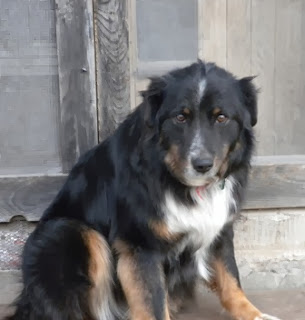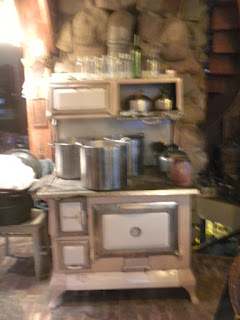For fourteen, nearly fifteen years, he has lived and worked with Ken and me.
He was a charmer. When we went to look at puppies and choose one, he kept coming up to us, sitting and wagging his tail.
He chose us
He became Jack the Dog when, during a pottery show here, it appeared he was about to misbehave and I shouted, "Jack!" A boy's head snapped around. Remembering he was also named Jack, I yelled, "No, not you - Jack the Dog!"
Jack was clever and wanted to please. Since he was my first dog, he and I went to obedience classes. We were told that by the end of the session Jack needed to do a trick. With minimal effort on his and my part, he could sit and shake by the second class - even the instructor was impressed.
He was also a lifelong learner - Ken taught him to roll over after he was an adult -
that old dog could learn new tricks!
Our dogs are working dogs, and Jack took his job seriously.
He not only protected us, but also the garden and poultry. The only time he harassed a bird was when I moved it without him - he was trying to move that cockerel to where he had been and Jack thought he should be. After that I moved birds with Jack so he knew where they should be.
Unlike his predecessor Ken's Abby, and successor, Oscar, he did not bark until unwanted animals decided to move on; he merely dispatched intruders - muskrats, woodchucks, possums, a stray cat, raccoons, and he could even kill a skunk without getting skunked. He faced off an aggressive bear when I went to close the chicken coop one night.
Not only tough, Jack sought out people and other dogs - he was a social animal. He went to drum circles where he made many friends of two and four legged variety. His disadvantage was being a black dog in the dark. Once he got under foot at a pottery firing, and poor Jenny - cracked ribs. She still made a fuss over him each time she saw him
As he aged and moved into retirement, he trained Oscar his successor.

He maintained good health until a couple days ago.
He was a bit weak and disoriented, and then he left our lives as graciously as he arrived.
I miss him, and feel so grateful my first dog was such a good one.


















































